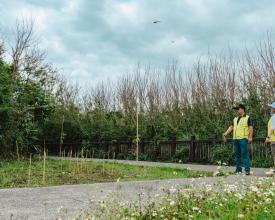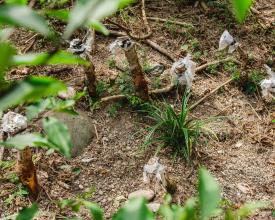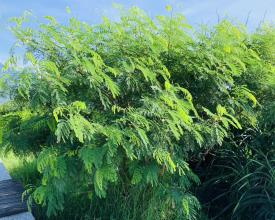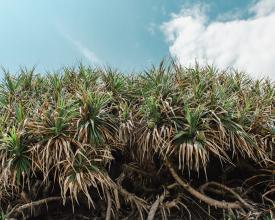
Ecological restoration of Chihsingtan Protection Forest
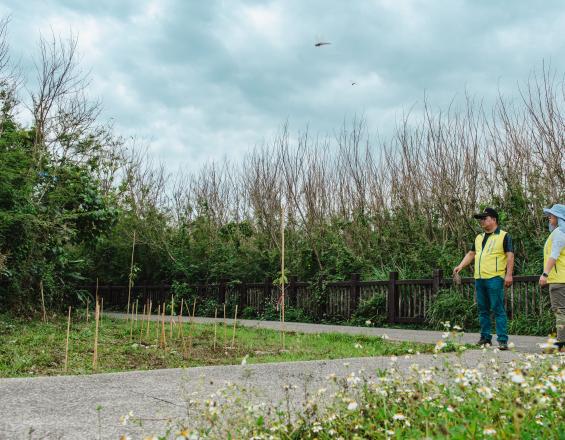
The construction of tourist facilities and trails showcasing the scenic coast of Chihsingtan has caused a significant area loss of its protective forest. In response, the Chihsingtan Community Development Association has taken a series of measures to ecologically restore the forest, bolster its climate resilience, and raise awareness. A dedicated patrol team was established to combat the proliferation of the invasive plant Leucaena leucocephala. A portion of the plants were cut down, and their stumps were treated with a mixture of rock salt and water, then sealed with plastic bags. Next, fast-growing native trees, such as Calophyllum inophyllum and Pittosporum pentandrum, were introduced to encourage biodiversity through ecological succession. Additionally, the aging of Pandanus odorifer was addressed by planting new sprouts amidst the older trees, thereby enhancing soil fixation capability. Lastly, instructors have been engaged to educate the community about the significance of protection forests and the marine environment.
Impacts
In 2022, the Chihsingtan Community Development Association dedicated 400 hours on ecological restoration and monitoring for the protective forest. Their commitment translated into plant counts, ecomaps, and the removal of 117 Leucaena leucocephala plants, with each stump treated with rock salt for thorough eradication. The forest was further fortified through the introduction of 400 Pandanus odorifer seeds and seedlings, coupled with the integration of 300 robust plants.
The patrol team's vigilant forest visits have proved to be an effective safeguard against potential harm, as the damage has been lessened. Positioned along the coastal fringe, the Chihsingtan protective forest is a seamless connection between land and sea, with the patrol team's endeavors benefitting both realms.
Beyond the forest's edge, the Association actively tackled wind-blown debris, fostering collaborations with neighboring elementary schools for beach clean-up initiatives. These efforts fostered a heightened sense of awareness about plastic reduction, prompting the voluntary establishment and nurturing of an eco-friendly haven.
Looking ahead, the Association envisions a horizon adorned with native nectar source plants, a testament to their unwavering commitment to enhancing biodiversity.
